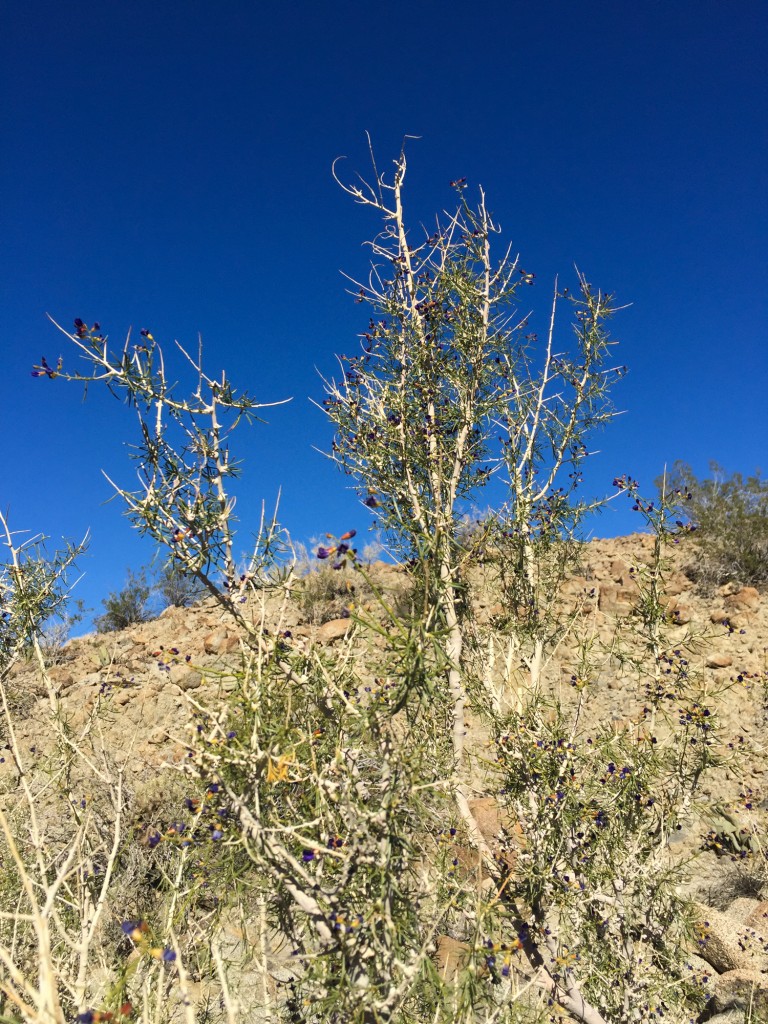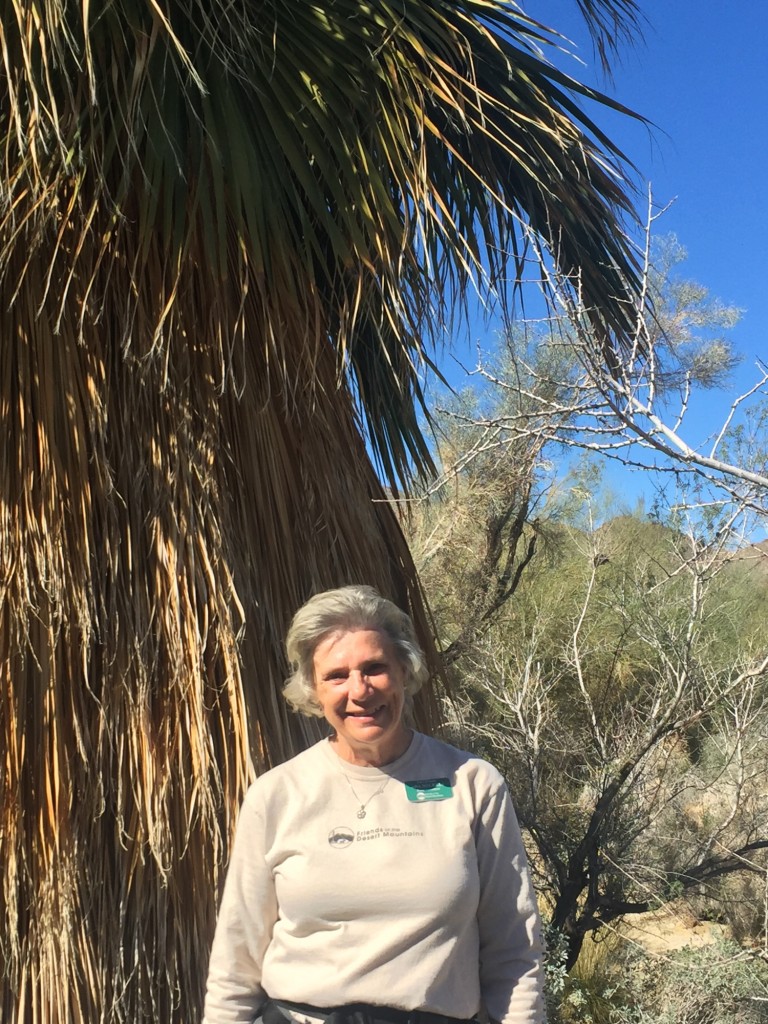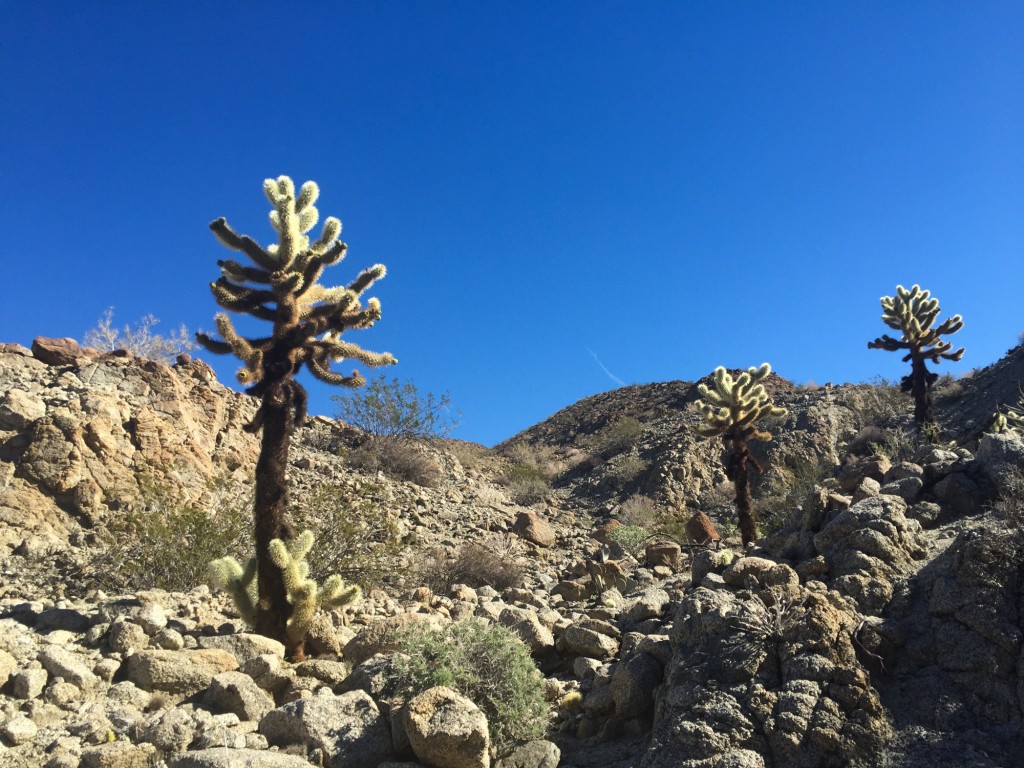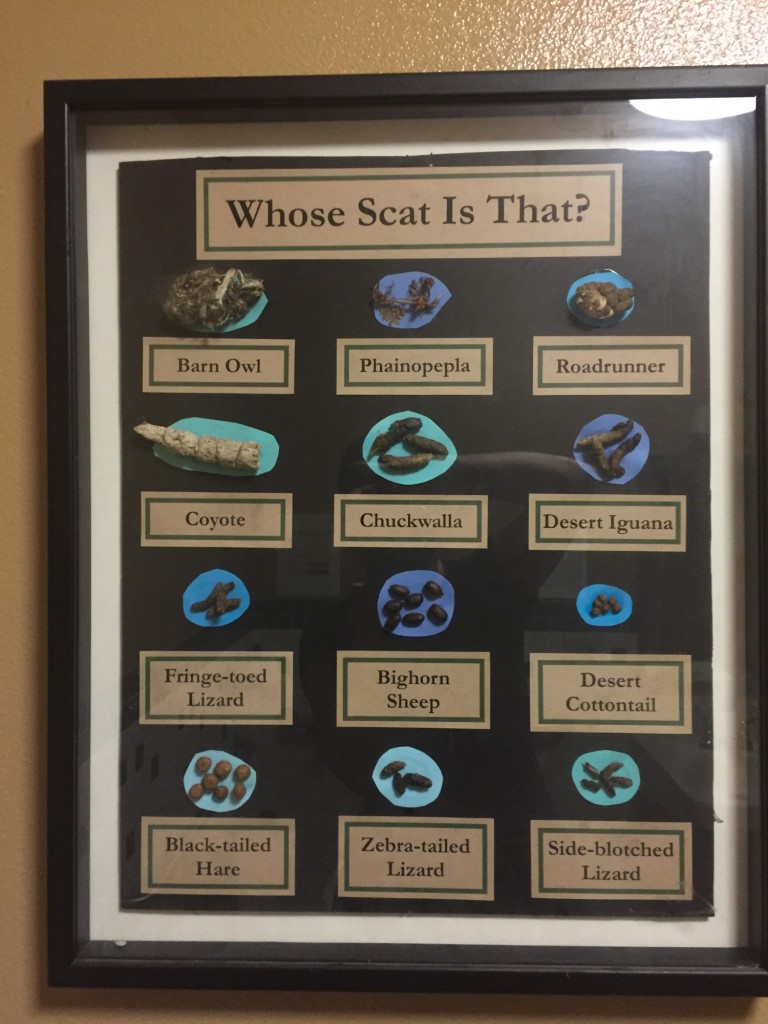I love quiet hikes, where you’re walking at your own speed, getting some exercise and thinking your own thoughts. But sometimes it’s nice to have a guide. Especially one as pleasant and experienced as Ada Nuckels, lead volunteer at Santa Rosa and San Jacinto Mountains National Monument. After a career in medical offices, Ada decided it was time to go outside. She retired and has been volunteering at the monument in Palm Desert for six years.

Even though the bloom is purple, Cahuilla Indians made yellow-orange dye from the indigo plant.
The monument has three easy hikes – a one-mile, two-mile and three-mile loop. Across the street from the monument, hikers can choose a more rugged hike on the 12.2-mile Art Smith Trail.

Ada Nuckels, lead volunteer and hiking guide extraordinaire
We meandered the two-mile loop, with frequent stops so Ada could tell us about desert plants. It was early February, a month before the annual Coachella Valley Wildflower Festival, and Ada hoped the flowers would show by March fifth. A few years of drought have left the plants short on rock daisies, indigo, chuparosa, lavender, creosote and other desert blossoms.
But that didn’t stop Ada from showing us what the flowers looked like. She brought her very well-worn wildflower book, and would hold it open beside cacti, a sort of before and after picture.
Occasionally people see desert tortoises in the area, and peninsula bighorn sheep. We glimpsed a couple of small lizards.

Looks soft, but teddy bear cholla is awfully sharp
My favorite desert plant was the teddy bear cholla. Its fluffy arms look almost huggable. But don’t do it – you’ll come away with a chest full of barbed thorns. People often call it jumping cholla. Ada explained that if you get near it at a certain resonance – such as a bunch of runners thumping the ground – an arm can break off and before you know it, it’s got you.
We also encountered the odd cheese plant. For 10 months out of year, it looks like a pile of twigs. But during the two months it’s green, it smells like limburger cheese. We were there for that two-month window. Indeed, it was a cheesy smelling plant.
As long as you can handle some uneven ground, this is a good hike for almost anybody. Not too demanding and lots to see. From October through April, Ada and other volunteers lead three hikes per week. And you can even bring your teenagers – Ada pointed out a strange rock that’s really a cell phone tower, ensuring coverage on your hike.

Just in case you were wondering, this handy chart is in the restroom.



